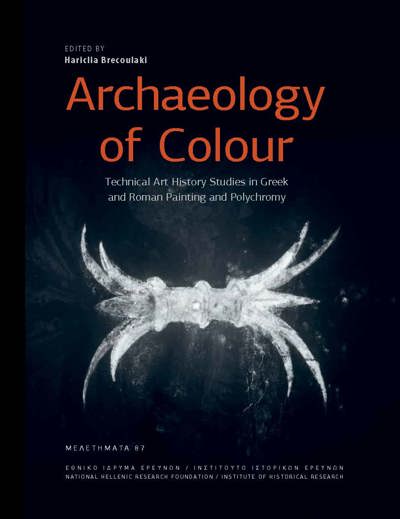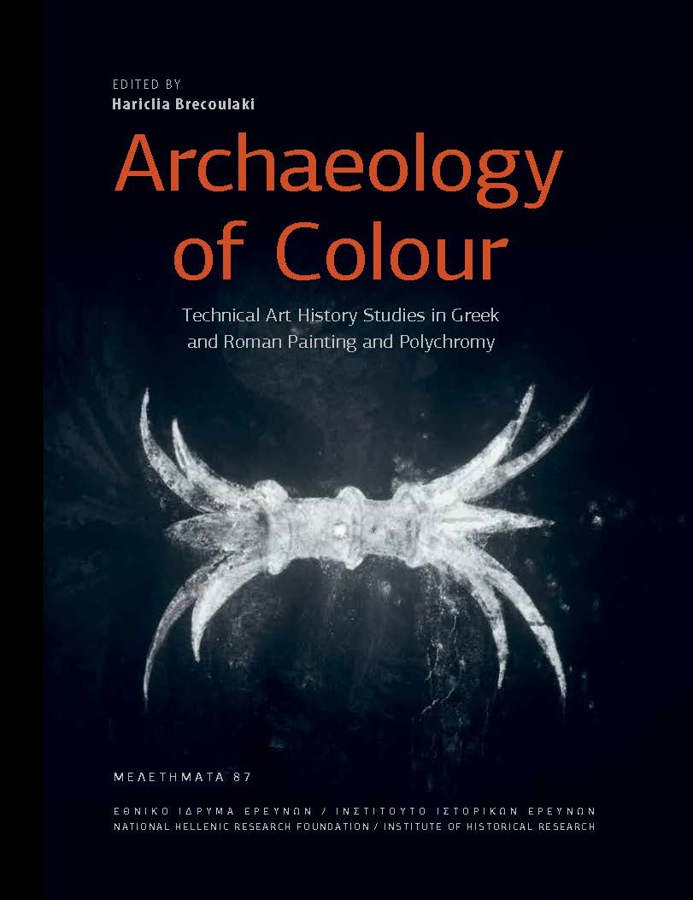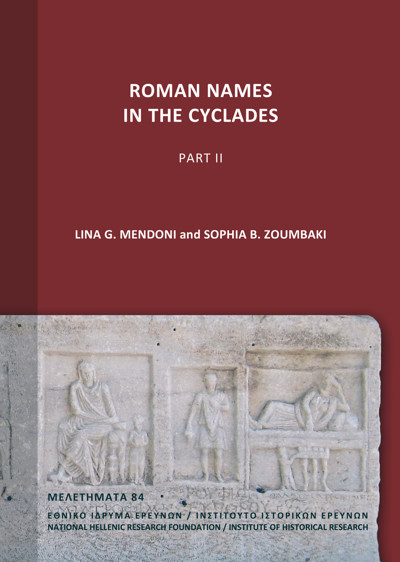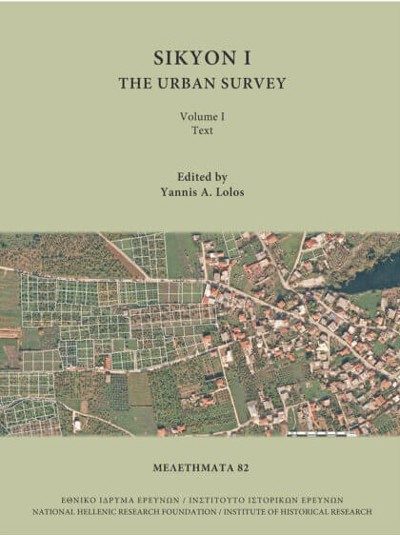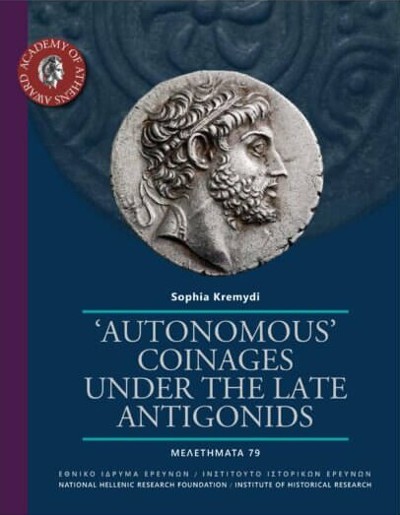
Archaeology of Colour
Technical Art History Studies in Greek and Roman Painting and Polychromy
Hariclia Brecoulaki (ed)
- Pages: 450 p.
- Size:216 x 280 mm
- Language(s):English
- Publication Year:2024
- € 132,08 EXCL. VAT RETAIL PRICE
- ISBN: 978-960-371-089-9
- Hardback
- Available
"These combined chapters deliver a plethora of possibilities to study forensically the once colourful objects and to retrieve many results from the tiny pieces of pigments, often not visible to the naked eye. They allow us to re-evaluate and re-imagine the original artist’s work. How the scientific methods are applied is, despite the high-end technology used, often comprehensively explained and well illustrated (e.g. Chapters 5 and 6). The authors and their teams of archaeologists, scientists, conservators and museum staff can be congratulated that their meticulous search for the minuscule traces of paints deliver a much brighter colourful past and emphasise the skills of the ancient artists and craftspeople." (Marion Uckelmann, in Antiquity, 99/405, 2025, p. 890)
Ancient polychromy speaks a language of “the visible” and “the invisible”, through signs of pigments, brushstrokes and forms. Another reminder of our classical past, colour is an inherent component of artistic creation, inspiration and imagination. New sophisticated technologies, as well as the development of interdisciplinary studies over these past decades, have stimulated the collection and evaluation of numerous scientific data from in-situ investigation of polychrome and painted documents, and have challenged our understanding of the complexity and function of ancient painting materials and techniques. The present volume is another contribution to the ongoing exploration of the rich history of colour in the classical world; an exploration which builds on previous knowledge and opens up new horizons for a more extended understanding of the aesthetics and meaning of Greek and Roman art. It includes fifteen papers that move from Archaic and Classical Greece to the Hellenistic and Roman periods, and deal with colour on monumental architecture, marble statues and reliefs, wooden and terracotta statuettes, stone sarcophagi, paintings on stone and plaster, and pigments as raw materials.
INTRODUCTION
Hariclia Brecoulaki
ARCHAIC / CLASSICAL PERIOD
1. Physicochemical Characterization of Colours and Plasters of an Archaic Sarcophagus from Chiliomodi, Corinth
Yannis Maniatis, Eleni Korka, Melina Fotopoulou, Chara Sakellari, Nikos Minos, Safaa Abd El Salam, Alessia Andreotti, Maria Perla Colombini, Stefano Legnaioli and Hariclia Brecoulaki
2. The Revelation of the Decorative Pattern on the Coffered Ceiling of the Porch of the Karyatids in the Erechtheion
Giasemi Frantzi, Anastasia Maridaki, Eleni Papakonstantinou, Giovanni Verri, Sophia Sotiropoulou and Hariclia Brecoulaki
3. Technical Investigation of the Polychromy of the Northwest Raking Sima of the Parthenon
Eleni Aggelakopoulou, Anastasia Panou, Ioannis Kotsifakos, Αnastasia P. Moutsatsou, Asterios Bakolas, Maria Karoglou and Elisavet P. Sioumpara
4. Two Polychrome Ionic Capitals from the Athenian Agora: Documentation and Experimental Reconstruction
Vinzenz Brinkmann, Ulrike Koch-Brinkmann and Heinrich Piening
LATE CLASSICAL / HELLENISTIC PERIOD
5. A Pilot Technological Investigation of the Aigai (Vergina) Hunt Frieze: Retrieving Ancient Colours, Rethinking Modern Reconstructions
Hariclia Brecoulaki, Andreas G. Karydas, Giovanni Verri and Kalliopi Tsampa
6. The Figured Stelai from the “Great Tumulus” of Aigai Revisited: New Findings on the Distribution of Pigments and Aspects of their Iconography
Myrina Kalaitzi and Giovanni Verri
7. Organic Binders and Painting Techniques of Funerary Wall-paintings from Ancient Macedonia
Lydia Avlonitou, Maria Perla Colombini and Anna Lluveras-Tenorio
8. Greek Gilded Wood: an Exceptional Polychrome Peplophoros from Kerch (Musée du Louvre)
Brigitte Bourgeois, Violaine Jeammet and Sandrine Pagès-Camagna
9. The Spectrum of Skin Colours in Hellenistic Sculptures and Other Media. A wide range with different meanings
Clarissa Blume-Jung
ROMAN PERIOD
10. New Research on the “Monochromes on Marble” from Herculaneum and Pompeii
Susanna Bracci, Roberta Iannaccone, Sara Lenzi and Paolo Liverani
11. Identification of Pigments on Ancient Sculptures from the Collections of the Archaeological Museum of Thessaloniki
Polyxeni Adam-Veleni, Katerina Tzanavari, Christos S. Katsifas, Dimitris Karolidis and Orestis Kourakis
12. Roman Sarcophagi Use and Reuse: Colour Application Techniques and Ancient Repainting
Eliana Siotto
ON COLOURS
13. Eclectic Uses of Egyptian Blue in Greek Painting: a Versatile Painting Material
Hariclia Brecoulaki, Giovanni Verri, Anne-Marie Guimier-Sorbets and Lydia Avlonitou
14. In Search of Mineral Pigments Described by Theophrastus of Eressos: Cyanus from Scythia, Miltos from Sinope and Ochre from Cyprus
Thomas Katsaros
15. Did Colour and Colouring in Greek Art Confer Prestige?
Elena Walter-Karydi
INDEX
